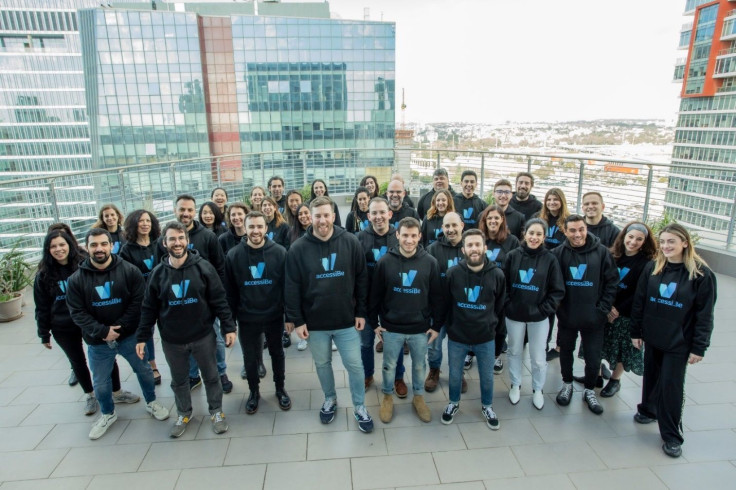accessiBe Looks to Advance digital Inclusion through AI-Powered Web Accessibility
There are about one billion people living with disability around the world.
In the United States, 61 million Americans live with some form of disability. Unfortunately, despite their significant numbers, efforts to ensure that they have equal access to spaces, utilities, and services remain lacking.
Take technology and the internet, for example. Disabled people typically need assistive devices and applications to use computers. In addition, most websites are improperly configured for accessibility. Even when accessed through assistive technologies such as screen readers, websites and applications may not be interpreted properly due to noncompliance with accessibility standards. Web accessibility platform accessiBe has found that out of 10 million web pages it surveyed, 98% all pages fall short of compliance.
Because of this, disabled people are less likely to use technology and access the internet compared to those without disabilities. The disabled simply miss out on the benefits that the technology now provides. This has become even more of a concern as the coronavirus outbreak rampages throughout the globe. The pandemic has prompted governments to enforce lockdowns, forcing businesses and services to shift their operations online and people to stay at home more than ever. Imposed social distancing regulations have made life even more challenging for the disabled. With limited access to the internet, they risk becoming more isolated.
Fortunately, this important matter has not escaped forward-thinking ventures like accessiBe. The company looks to promote inclusion and wider web accessibility by making it easy for businesses and site owners to make their sites standards-compliant through artificial intelligence (AI).
Complying with standards
For websites to be accessible, they must adhere to the Web Content Accessibility Guidelines (WCAG) which outlines how web content can be made more accessible to people with disabilities. It also includes a set of testable success criteria that can help developers identify the functionalities that their sites and applications need to feature.
However, following the WCAG has its challenges. For example, it is common for established websites to have millions of lines of text content and thousands of rich media files such as images, audio, and video. For such sites to be interpreted by screen readers for the visually impaired, content must be properly composed and tagged. Images should have proper "alt texts" or descriptions, and video must have closed captioning.
Performing an audit on such a site can take weeks or months when done manually. Applying the necessary remediation for WCAG compliance can even stretch the effort to take longer. The whole process may even demand the involvement of web development expertise as new functionalities have to be introduced to meet certain success criteria.
Using AI to drive accessibility

accessiBe's platform aims to solve this by leveraging AI to make review, remediation, and compliance pain-free. The technology allows for automated evaluation and remediation processes so that sites can easily comply with the WCAG.
Site owners can enable the platform by simply installing a single line of Javascript code. Once enabled, accessiBe's AI readily scans sites and fixes accessibility issues to make them compliant within 48 hours. It also adds an accessibility interface so that users can make adjustments to websites based on their specific needs.
Users with visual impairments, for instance, can change various visual components such as font size, color, and spacing. The platform uses AI to process media content to provide alternative texts so that screen readers can properly interpret site content for the visually impaired.
Those with motor impairments who struggle using a mouse can enable the keyboard navigation option which allows them to browse site content using the TAB, arrow, and ESC keys. They can also use letter and ENTER keys to click on site elements.

Users with cognitive disorders can use the platform's built-in dictionary whenever they find certain words and phrases difficult to understand. Animations such as GIFs and flashing images that can trigger seizures to epileptics can even be disabled.
Benefiting all stakeholders
The availability of such web accessibility platforms comes as a boon for both site owners and the disabled.
Organizations will be able to follow the provisions under the WCAG and comply with laws such as the Americans with Disabilities Act (ADA) that aim to make basic services available to everyone. This will help them avoid facing lawsuits and penalties imposed by regulatory bodies. Lawyers have already warned that ADA-related website litigation is likely to increase.
Apart from achieving compliance, businesses will also be able to offer their services to a previously untapped but significant market. For instance, they can cater to adults with disabilities who have a total disposable income of $490 billion.
More important than these benefits, however, is that site owners will be able to do the right thing. People with disabilities will finally enjoy equal access to the wealth of information and services available online.
Advancing inclusion
As the world becomes more reliant on technology and the internet, it is crucial that necessary steps are taken to ensure that no one is left behind. Web accessibility solutions such as accessiBe are helping organizations make it a reality. While the platform has already helped more than 25,000 businesses, there is still a long way to go before the internet becomes truly accessible to all.
Ultimately, everyone must do their part so that the internet truly becomes the democratizing tool that it is often touted to be.
-sponsored post by accessiBe-



















